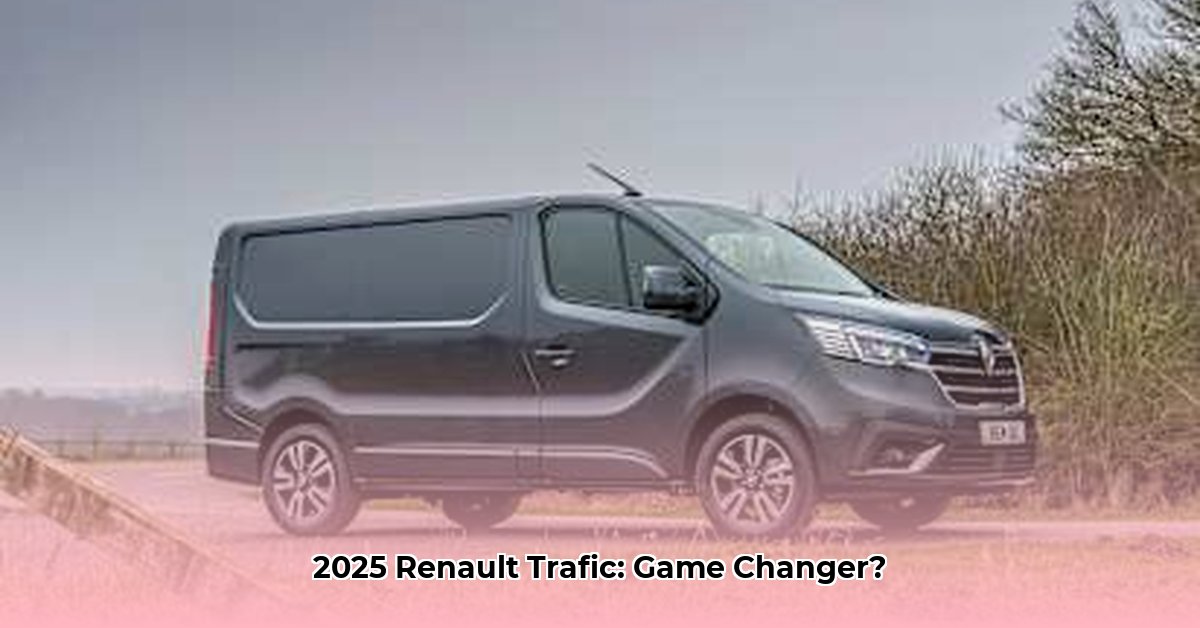
The Renault Trafic, a stalwart in the commercial vehicle market for over four decades, continues to evolve. This review examines the 2025 model, analyzing its specifications, features, and market position to determine its suitability for today's businesses and drivers. We'll explore its historical context, technological advancements, and future prospects, providing a comprehensive assessment of this enduring van.
A Legacy of Adaptability: The Renault Trafic's Enduring Appeal
The Renault Trafic’s longevity is a testament to its adaptability. Millions sold worldwide demonstrate its success in meeting diverse needs. This isn't simply about incremental updates; each generation reflects a deep understanding of evolving market demands and technological progress. From its origins as a reliable workhorse, the Trafic has transformed into a diverse range of vehicles catering to various applications. This adaptability is a key factor in its enduring appeal.
Powertrains: Diverse Options for Varying Needs
The 2025 Trafic provides a range of engine options, including efficient diesel engines optimized for fuel economy and performance. However, the most noteworthy addition is the fully electric variant. This signifies a significant commitment to sustainable transportation, aiming to appeal to environmentally conscious buyers and potentially providing lower running costs. The choice between diesel and electric depends entirely on individual operational needs and priorities. Does the potential for reduced emissions outweigh the higher initial investment in the electric model?
Driver-Focused Cabin: Comfort and Practicality Combined
The 2025 Trafic’s cabin prioritizes both driver comfort and practical functionality. Ergonomic design minimizes driver fatigue on long journeys. Clever storage solutions maximize space utilization, benefiting both the driver and passengers. The exterior retains the Trafic's familiar profile, subtly updated with contemporary styling while maintaining its robust, functional aesthetic. But how does this driver-centric design translate into real-world productivity gains?
Safety First: Comprehensive Driver-Assistance Systems
Safety is paramount in the 2025 Trafic. A comprehensive suite of Advanced Driver-Assistance Systems (ADAS) is standard. This commitment extends beyond regulatory compliance, demonstrating a dedication to driver and passenger well-being. Features like adaptive cruise control, lane-keeping assist, and blind-spot monitoring enhance safety significantly. This translates to increased peace of mind and potentially reduced accident rates. But are these features truly effective in the real world, or are they mere marketing gimmicks?
Adaptable Cargo Space: Catering to Diverse Needs
Cargo space is crucial for a van, and the Trafic excels here. Multiple body configurations offer flexibility to meet diverse transport needs. Whether transporting bulky goods, personnel, or a combination of both, the Trafic offers tailored solutions. This adaptability is a significant competitive advantage, setting it apart from rivals with less flexible options. Does this flexibility justify any potential premium over less adaptable competitors?
Market Position: Navigating a Competitive Landscape
The Trafic competes with established vans like the Mercedes-Benz Vito and Volkswagen Transporter, and newer entrants such as the Hyundai Staria Load. Its competitiveness hinges on factors like reliability, its diverse model range, and pricing strategy. The market is fiercely competitive, necessitating continuous improvement and adaptation to maintain market share. How does the 2025 Trafic stack up against these competitors in terms of long-term value?
Strategic Partnerships: Expanding Global Reach
Renault's collaborations with Nissan, Opel, and Fiat have significantly expanded the Trafic's global reach. These partnerships optimize production, leveraging manufacturing expertise and distribution networks. While offering economies of scale and wider market access, these partnerships might impact brand identity. Further investigation is needed to fully assess the impact of these alliances on the Trafic's overall success. What are the long-term consequences of these partnerships on the Trafic’s unique selling propositions?
Electrification's Impact: Sustainability and Innovation
The electric Trafic represents a pivotal move towards sustainable transportation. This not only aligns with growing environmental regulations but showcases Renault's long-term commitment to electric vehicle (EV) technology in the commercial vehicle sector. This strategic decision directly addresses environmental concerns and positions Renault as an innovator within the industry. But will the electric Trafic's higher upfront cost be offset by long-term savings in operational expenses?
Pricing and Value: Assessing the Overall Package
Pricing for the 2025 Trafic varies based on specifications and regional markets. Renault's goal is to offer a compelling balance of features, performance, and affordability. Consulting local dealerships is crucial for obtaining precise pricing. While the value proposition is strong, individual research is imperative for informed decision-making. How does the Trafic's price compare to its competitors, considering the overall package of features and performance?
Conclusion: A Modern Workhorse for Diverse Needs
The 2025 Renault Trafic represents a successful evolution of a proven design. Its strength lies in its enduring reliability, enhanced by modern technology and a commitment to sustainability. While the market remains competitive, the Trafic’s versatility, combined with advancements in electric vehicle technology, positions it for continued success. The final verdict, however, depends entirely on individual needs, but its broad appeal and strong performance make it a contender worth serious consideration.